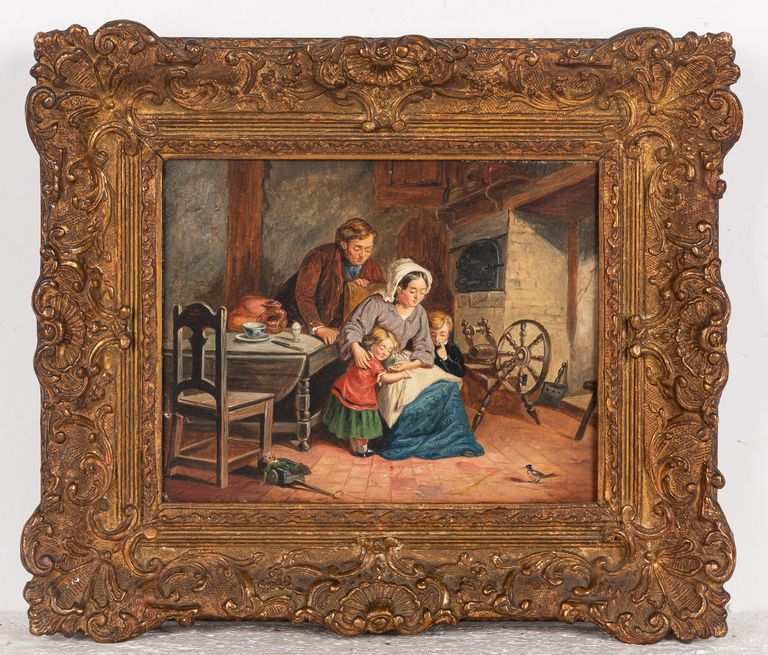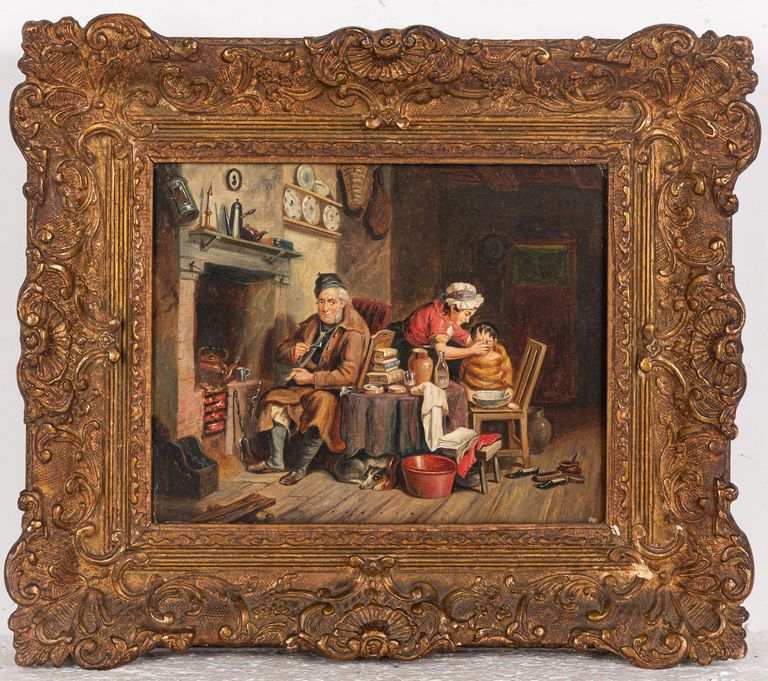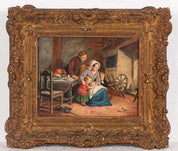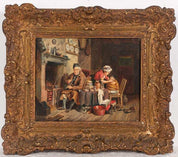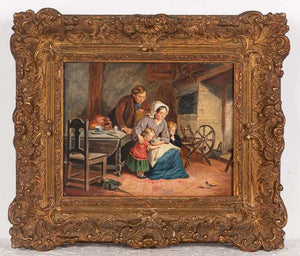Follower of Frederic Daniel Hardy – Domestic Life Beside the Fire & The Feathered Visitor
Follower of Frederic Daniel Hardy
Artwork Details
Artwork Description
Follower of Frederic Daniel Hardy – Domestic Life Beside the Fire & The Feathered Visitor
- Artist: Follower of Frederic Daniel Hardy
- Title: Domestic Life Beside the Fire & The Feathered Visitor
- Medium: Oil on Canvas (Pair)
- Dimensions: Each 20 x 25 cm (7¾ x 9¾ in.)
-
Provenance:
- Sale, Bonhams, Knightsbridge, 12 September 2006
- British and Continental Pictures, Lot 164
- Condition: Overall good condition, unsigned
Detailed Description:
This charming pair of oil paintings on canvas is executed in the style of Frederic Daniel Hardy (1827–1911), a celebrated French artist known for his detailed and heartwarming depictions of domestic life. Hardy was part of the Barbizon school, a movement that emphasized realistic portrayals of everyday rural life, and his works often centered around intimate, narrative-driven interiors.
These two paintings, "Domestic Life Beside the Fire" and "The Feathered Visitor," capture the essence of Victorian-era domestic tranquility, infused with warmth, rich detail, and a sense of quiet storytelling.
1. Domestic Life Beside the Fire
This painting portrays a cozy interior scene, likely set in a humble yet well-kept 19th-century home. The composition features figures gathered around a fireplace, engaged in daily activities such as sewing, reading, or conversing. The artist pays great attention to light and texture, with the flickering fire casting a warm glow on the surrounding furniture and figures. The scene conveys a strong sense of comfort, stability, and domestic contentment.
2. The Feathered Visitor
In contrast, the second painting, The Feathered Visitor, presents a delightful interaction between humans and nature within the domestic space. A small bird, possibly a sparrow or finch, has entered the home, capturing the attention of the occupants. The figures in the painting, likely a child or an elderly woman, express gentle curiosity and amusement at the unexpected guest. The painting masterfully balances interior stillness with the dynamic movement of the bird, showcasing the artist’s ability to create engaging, narrative-driven compositions.
Artistic Techniques & Style:
- Rich Color Palette: The artist employs earthy browns, deep reds, and soft yellows, emphasizing warmth and depth. The interplay of light and shadow creates a naturalistic ambiance.
- Intricate Detailing: Every element, from the texture of the wooden furniture to the folds of clothing, is carefully rendered, reflecting the influence of Hardy’s meticulous technique.
- Human Presence & Narrative: These paintings go beyond simple genre scenes; they capture subtle emotional expressions, inviting viewers to engage with the characters and their world.
Although unsigned, these works demonstrate a strong stylistic resemblance to Hardy’s compositions, making them an excellent example of 19th-century European realism and genre painting.
Historical & Cultural Context:
During the 19th century, genre paintings of domestic life became highly popular, particularly in France and Britain. Artists like Hardy, Jean-Baptiste Greuze, and François Boucher sought to romanticize and celebrate everyday rural living, often portraying working-class and middle-class interiors in exquisite detail.
Scenes such as these were highly sought after by collectors in the Victorian era, as they evoked nostalgia, warmth, and a sense of order amidst the rapidly industrializing world. These artworks served as windows into a simpler, idealized past, where family and home were central to life.
Provenance & Collectability:
These paintings were auctioned at Bonhams Knightsbridge in 2006 as part of their British and Continental Pictures sale, confirming their place within the European art market. While they are not directly attributed to Frederic Daniel Hardy, their quality, subject matter, and stylistic execution make them highly desirable to collectors of 19th-century genre paintings.
As a matching pair, these works retain their decorative and historical value, appealing to those who appreciate traditional interiors, warm domestic scenes, and European Realism. Their small size (20 x 25 cm each) makes them particularly suitable for intimate display settings, whether in classic home interiors, gallery walls, or private collections focused on 19th-century art.

